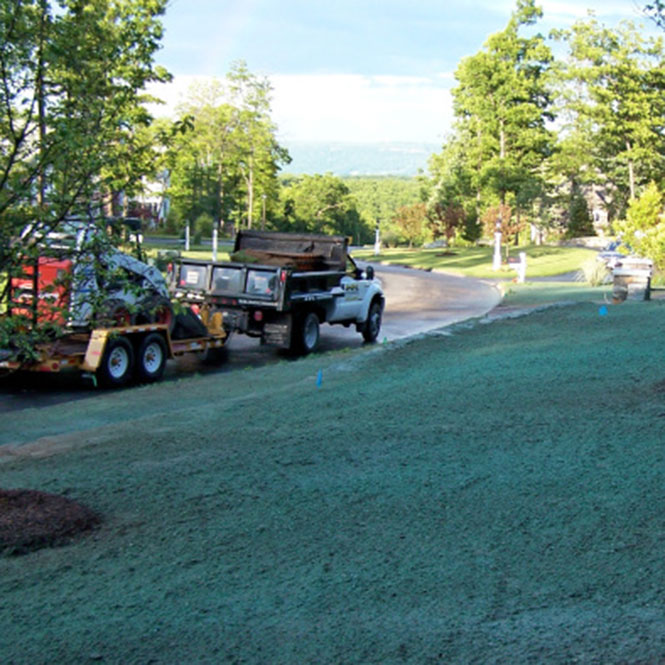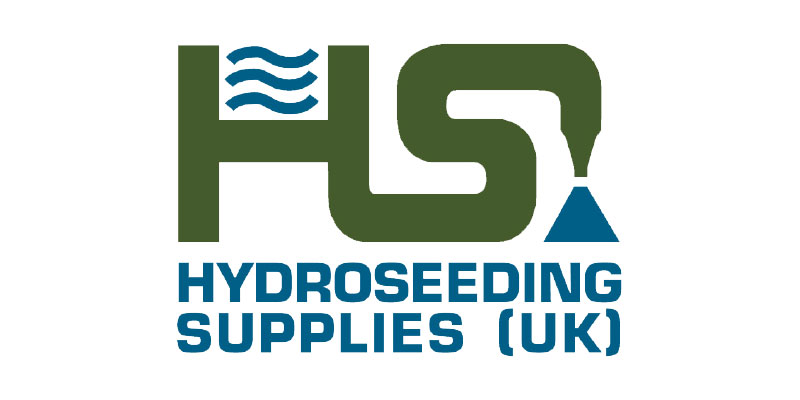Hydroseeding can have varied reactions from those in the industry, as well as those looking ad considering the impact of it commercially and ecologically from the outside. It is fair to say there are a number of misconceptions both in terms of what hydroseeding can achieve and what it involves from an impact point of view
In the USA, where much of the machinery innovation had traditionally come from, the topic is understood to a far greater degree. One one end of the scale there is the idea that “It’s just grass seed mixed with water” [This is not correct] and from the other end of the spectrum scare stories about hydroseeding erosion and the impact on agricultural jobs [these are not correct either]
Thinking long and hard about how to approach the issue from a lay-mans point of view. It is probably best to approach any discussion of the topic initially with an understanding of what a good hydroseeding set-up aims to achieve. There are two, none mutually exclusive, goals.
Goal one. To seed a large area of ground as efficiently as possible. Getting the right amount of seed and nutrients for that seed into prepared soil. Offering the best chance for successful germination and growth without waste and in as timely and cost effective manner as possible
Goal two. To seed areas of land that are either hard to reach, or where planting and nutrient supply would otherwise be difficult to, for example, the area being on a steep slope or otherwise hard to reach with traditional grass growing methods.
Safe and Cost Effective
Landscaper magazine supplied the following analysis;
Hydroseeding has developed massively in the last 10 years with both equipment, materials and expertise, but interestingly peoples perception and knowledge of it hasn’t changed much in that time. Very little, if any publicity or independent articles are produced and published that offer the landscaping professional, architect or designer up to date information on the benefits of hydroseeding and how it can be utilised cost effectively on an ever increasing range of applications.
With this in mind it appears that more companies have and are now considering diversifying into hydroseeding and that the traditional “blow and go” attitude days are numbered. These new operators all share one common objective, to raise the bar! Through starting off the correct way they are successfully demonstrating to their client base that by formulating and delivering an honest specification they can achieve premium results and that that does not necessarily mean premium prices.
Modern hydroseeding machinery is now readily available in the UK and is primarily aimed at either full time/large project contractors or occasional use, smaller landscapers. With distinct differences in types of machinery ie; paddle agitation and jet agitation each type of contractor now has a cost effective choice that will provide the throughput of material versus the type of project being worked. A full time contractor will generally run a paddle agitated machine that may be capable of covering 15,000m² a day and a landscaper typically providing a domestic service with a jet agitated machine that may achieve 2,000m² a day.
Ecologically Sound Solutions
We supply a comprehensive range of hydroseeding equipment and consumables from specialist erosion control matrix’s, wood and paper variant based mulches to tackifiers, growth stimulants and soil amendments. Thankfully, gone are the days of when the contractors only mulch choice was either unrefined waste paper or a waste denim fibre/jute material with the occasional button or pocket thrown in for good measure!





